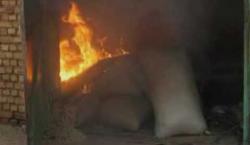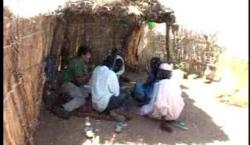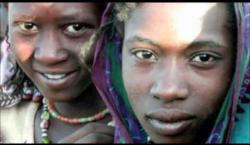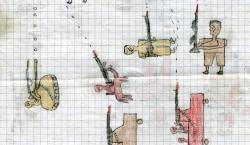Advertisement
Kenya Raid Projects Al Shabaab Onto Global Jihadist Stage
MOGADISHU/NAIROBI (Reuters) - Somali Islamist militant group al Shabaab's attack on a shopping mall in the heart of the Kenyan capital has thrust it to the forefront of the global jihadist movement after years of internal feuding over the group's aims.
The apparent sophistication of the weekend raid, involving 15 or so heavily-armed fighters who held off Kenya's military for four days, suggests careful planning and a trained strike force that goes beyond the group's hallmark hit-and-run tactics.
Regional intelligence experts said they believed the raiders, who killed 67 people in an assault that shocked Kenya and the world, were members of a crack unit loyal to the group's leader, Ahmed Godane, who has been seeking to rebrand al Shabaab as a significant international jihadist group.
Al Shabaab had threatened revenge against Kenya since its troops joined the war against Islamist militants in its chaotic northern neighbour two years ago in an operation codenamed "Linda Nchi", or "Protect the Country" in Swahili. The group had created funding, recruiting and training networks in Kenya, security agencies say.
The mall attack bears out Western fears that the insurgents would use Somalia, a hotspot in the U.S.-led war on Islamist militants across the globe, as a launch pad for strikes on regional countries even as African troops put them on the defensive in the Horn of Africa state.
Al Shabaab has been weakened by an African Union-led offensive that has expelled the group from urban strongholds over the past two years, but they remain a dangerous threat.
"They have not been dying in the past two years. They have developed guerrilla tactics instead of face-to-face fighting," said a Somali intelligence officer who identified himself as Ahmed, a former Islamist fighter.
"There are still many foreign fighters with Godane."
Al Shabaab spokesman Sheikh Ali Mohamud Rage told Reuters the gunmen who burst into the Israeli-built, upscale Westgate mall around midday on Saturday were "well-trained special forces". Their exact identity, though, remains unknown.
A Nairobi-based diplomat said it was possible Godane's own secret service, the Amniyat, an elite unit which has its own chain of command, logistics network and financial resources, carried out the raid.
A second Somali intelligence agent, who gave his name as Mohamed, told Reuters he understood the Westgate attackers were a crack Shabaab unit known as the Iktihaam, after the Arabic term meaning to storm in.
The Kenyan military said the assailants were a "multi-national collection", but they have not confirmed reports that the raiders, whom President Uhuru Kenyatta said on Tuesday had been "defeated", include some Americans and British woman.
Al Shabaab is a militia which emerged from Somalia's Islamic Courts Union movement that pushed U.S.-backed warlords out of the capital Mogadishu before being ousted by Somali and Ethiopian forces. Al Shabaab went on to seize large swathes of territory.
POWER STRUGGLE
Foreign combatants from the United States, Europe and the Gulf states have steadily gained influence within al Shabaab, many drawn by Godane's ambition to take the group's militant campaign beyond Somalia's borders.
Al Shabaab's first signature strike abroad came in 2010 when coordinated explosions killed more than 70 people in the Ugandan capital Kampala on the night of the World Cup soccer final. The group said the attack was to avenge the deployment of Ugandan peacekeepers in Somalia.
Repeated threats of a big strike on Kenyan soil failed to materialise, however, denting the aspirations of the ultra-hardliners to be a prominent affiliate within the al Qaeda franchise. But Saturday's high-impact attack on the mall, a symbol of Kenya's economic power, has changed that.
"A lot of people have been thinking of al Shabaab as a Somali issue but (after) this attack they are going to be viewed more as a part of al Qaeda and the global terrorist network," said Ali Soufan, whose Soufan Group provides strategic security intelligence to governments and businesses.
This could help al Shabaab to win new supporters and resources among militants committed to anti-Western jihad.
It also follows deep rifts within the group that saw a power struggle between those who wanted to keep its Jihad within Somalia - the so-called "indigenous faction" - and those led by Godane who wanted to take extend the campaign further afield.
"External attacks tend to happen when a group is trying to consolidate," said Leah Farrall, a former senior counter terrorism intelligence analyst with the Australian Federal Police. "In recent months you have been seeing a tremendous amount of fracturing in their domestic environment."
It is an internal fight that Godane appears to have won. After falling out with Godane, al Shabaab's one-time spiritual leader, Sheikh Hassan Dahir Aweys, fled and is now in government custody. A prominent U.S.-born militant, Omar Hammami, known as al-Amriki, or "the American", was killed in a gunbattle this month, after he criticised Godane's wider jihadist ambitions.
"HOME GROWN" KENYAN CONNECTION
While al Shabaab has pressed the narrative of a crack strike unit, capable of hitting across international borders, analysts said Kenya would also need to look closer to home to hunt down those who helped plan and orchestrate the raid.
Reports from Kenya's military that the gunmen moved covertly through Westgate's air ventilation system indicated a high-level of planning requiring a detailed knowledge of the mall.
"I would be very surprised if al Shabaab carried out this attack on its own," said Abdi Aynte, director of the Mogadishu-based Heritage Institute for Policy Studies. "They might have contracted a local Kenyan group to do some of the logistics and reconnaissance."
Al Shabaab's most important affiliate in Kenya is al Hijra, a group formerly known as the Muslim Youth Centre (MYC) based in Nairobi's rundown Majengo neighbourhood. Kenyan MYC members have trained and fought alongside al Shabaab in Somalia.
Kenya's 2011 military foray into Somali led to a surge in shootings, grenade and bomb attacks across Kenya. The Kenyan government blamed the attacks on al Shabaab, while security experts said local sympathisers were more likely responsible.
In July, the U.N. Monitoring Group on Somalia and Eritrea said al Hijra had suffered unexplained killings and disappearances of its members, believed to be the result of covert operations by Kenyan and international security services.
But U.N. investigators said al Hijra was "striving to regain the initiative, in part through its fighters in Somalia returning to conduct new and more complex operations", such as the mall attack.
"You've got a home grown problem in Kenya with links to combat training and fighting in Somalia and longstanding recruitment networks operating in Kenya," the diplomat said.
"The ingredients are all there."



















Add new comment